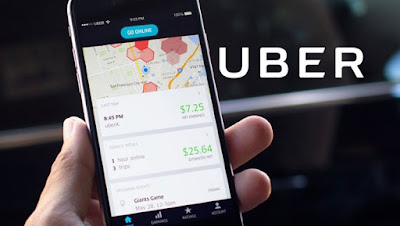One of the great things about
taking an Uber ride is that you get a map of the route from start to finish.
For those of us who expense a lot of Uber rides, that kind of tracking comes in
very handy. But location is just one of dozens of data points that Uber can
collect about your journey.
The
company will now be monitoring the very driving ability of its drivers—do they
exceed the speed limit, brake too hard, or gun the engine? This will help Uber
ensure its drivers are safe and efficient. But this technology isn't limited to
Uber—it's also being used to track millions of ordinary drivers right now.
Uber's initiative started as an
extension of customer service, as the company went looking for a way to confirm
rider complaints. Using the GPS, accelerometer, and gyroscope inside the phones
provided to Uber drivers, Uber can track the speed and motion of their cars
pretty easily. Their software can even tell if a phone is undocked from its
cradle, which could prompt a distracted driving alert. The app will even
monitor how long a driver has been on the road and suggest they take a break to
avoid fatigue.
These are all useful tools for
Uber and good for riders as well. Research from Progressive indicates that
habitual hard breaking is "highly indicative" of a future accident,
so it makes sense for Uber to use this data to manage its virtual fleet of
vehicles.
Part of the reason Progressive
knows hard breaking leads to accidents is that it installed sensors in
thousands of customer cars. You have probably seen Progressive commercials that
promise safe drivers up to 30 percent off their insurance premiums. Part of the
deal is installing a device called Snapshot into you car's ODB port; that's the
data port that your mechanic uses to figure out what the check engine light
means. Every car made since 2006 has one. Snapshot collects the same data that
Uber does—hard breaks, speeding, even when you are on the road—and sends it to
Progressive.
Progressive says drivers who
qualify for discounts can save an average of $150 a year. "The program is
best for those driving less than 50 miles per day, rarely during the hours of
midnight and four a.m. and using their brakes gently," it says.
Just like Uber, Progressive is
managing risk. And putting Snapshot in your car is entirely voluntary. Although
it isn't hard to imagine insurance companies making it a requirement for
high-risk drivers—teenagers, drivers with moving violations, Boston Drivers.
And the data collected by Snapshot can absolutely be used in court in the case
of an accident. In 2013, a man in Cleveland, Ohio, was acquitted of felony
assault because of data collected from a Snapshot.
Individual users can get in on
the action as well. You can buy a Bluetooth ODB adapter for about $20, download
an app like Automatic or Dash, and start collecting data on your driving habits
right now. These apps have the added benefit of helping you maximize your fuel
efficiency and understanding exactly how urgent that blinking check engine
light is. Loose gas cap? There is an app for that!
As far as I know, Uber isn't
using the ODB port to collect data; they are just using the sensors in drivers'
phones. But they will. Imagine being able to check the oil on every vehicle in
a 160,000-strong virtual fleet. And it is great that Progressive offers
discounts to safe drivers. Although participants should know, Progressive will
remember every hard stop forever.
But Uber and Progressive aren't
the only back seat drivers out there. Speed traps used to be a small-town
phenomenon, but now highways are perpetually monitored remotely. Police cars
automatically scan license plates as cars pass. Red-light cameras automatically
ticket cars without any human intervention.
Even Waze, that trusted source of
real-time, time-saving navigation instructions, shows a red indicator when you
surpass the speed limit. Sure, it will tell you there is a police car hidden
ahead, but pretty soon the cops won't have to pull you over. They will just
pull down your data.
Source: pcmag.com

0 comments:
Post a Comment